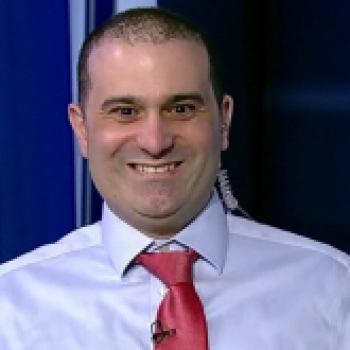
- All Instrument Types
- Indices
- Equities
- ETFs
- Funds
- Commodities
- Currencies
- Crypto
- Bonds
- Certificates
Please try another search

3 Reasons To Dump Small-Cap ETFs Now

U.S. small-cap stocks have persistently underperformed the large caps this year and finally ended up registering “their biggest weekly drop in a year and a half” in the week ended August 11, 2017, as per an article published on Financial Times. From a year-to-date look, small-cap fund iShares Russell 2000 ETF IWM is up about 0.9% this year (as of August 23, 2017) while the S&P 500-based fund SPY (NYSE:SPY) has gained about 9.4%.
Let’s take a look which factors are bothering pint-sized stocks and ETFs this year (see all small-cap ETFs here).
Weak Earnings
About 76.5% of the S&P 500 companies are already out with their earnings. Total earnings for the small-cap index are down 14.1% from the year-ago period despite 6% higher revenues, with 61.1% beating EPS estimates and 62.2% beating revenue estimates, as per the latest Earnings Trends.
Negative earnings growth for the small-cap index has been noticed for the third time in the last four quarters. Not only this, the earnings growth momentum and the share of positive EPS surprises for Q2 is trending below other recent quarters. The growth picture is surely expected to recover in the ongoing and following quarters, but that is probably because of easy comparisons (read: Earnings or Revenue-Weighted ETFs: Finding the Q2 Winner).
This clearly explains why SPDR S&P 600 Small Cap (NYSE:SLY) ETF SLY and Vanguard S&P Small-Cap 600 ETF VIOO are off 1.8% and 1.4% in the last three months, respectively (as of August 23, 2017).
The Russell 2000 has seen earnings per share growth of just 0.1% in the second quarter, according to data from Factset, quoted at Financial Times, in mid-August. This is in stark contrast to the large-cap Russell 1000’s more than 10% growth in earnings for the quarter, as per the source.
Ebbing Prospects of Trump Bump
Several pro-growth promises of President Trump now look uncertain. Major proposed reforms like the health care bill and defense budget increase are still way behind enactment. Though this confusion has raised chances of materialization of the proposed tax cut plan as Republicans apprehend losing the 2018 election, analysts now see chances of slight tax cuts rather than a full-ledged tax overhaul.
According to a Citigroup (NYSE:C) analyst, as quoted on CNBC.com, instead of a corporate tax rate in the range of 15 or 20% as proposed by the President and House Republicans, the rate might be around 25%, from 35% at present.
Since the prospects of fiscal stimulus have ebbed materially from the time when Trump was elected, small-caps have reasons to underperform.
Weakness in Greenback
The U.S. dollar ETF – Powershares DB US Dollar Index Bullish Fund UUP – is down about 8.8% so far this year (as of August 23, 2017). If the Fed remains slow thanks to still-subdued inflation and Trump favors a low-dollar environment, the greenback is likely to stay calm in the coming days. This has increased the scope of outperformance for those companies that operate aggressively in foreign lands, meaning large caps (read: If Dollar Remains Weak, Bet on These ETFs & Stocks).
And investors should note that though not altogether extinct, global growth worries are not as appalling as they used to be a few quarters back. In fact, things are looking up in the emerging markets and Euro zone lately. All these make the case for small-cap ETF investing weak.
Want key ETF info delivered straight to your inbox?
Zacks’ free Fund Newsletter will brief you on top news and analysis, as well as top-performing ETFs, each week. Get it free >>
PWRSH-DB US$ BU (UUP): ETF Research Reports
SALOMON LEASING (SLY): ETF Research Reports
VANGD-SP6 ETF (VIOO): ETF Research Reports
Original post
Zacks Investment Research
Related Articles

Over the weekend I warned about the weakness in the Semiconductor sector (SMH). I also wrote about Granny Retail XRT, and how important it is for that sector to stay alive. Both...

Pretty rough day out there—S&P 500 down about 1.8%, Nasdaq down around 2.2%, and small caps hit even harder, dropping 2.7%. However, the S&P 500 is approaching a crucial...

Two weeks ago, the rumor mill ramped up again about the potential restructuring of Intel Corporation (NASDAQ:INTC). The probing balloons centered around Taiwan Semiconductor...
Are you sure you want to block %USER_NAME%?
By doing so, you and %USER_NAME% will not be able to see any of each other's Investing.com's posts.
%USER_NAME% was successfully added to your Block List
Since you’ve just unblocked this person, you must wait 48 hours before renewing the block.
I feel that this comment is:
Thank You!
Your report has been sent to our moderators for review





Add a Comment
We encourage you to use comments to engage with other users, share your perspective and ask questions of authors and each other. However, in order to maintain the high level of discourse we’ve all come to value and expect, please keep the following criteria in mind:
Enrich the conversation, don’t trash it.
Stay focused and on track. Only post material that’s relevant to the topic being discussed.
Be respectful. Even negative opinions can be framed positively and diplomatically. Avoid profanity, slander or personal attacks directed at an author or another user. Racism, sexism and other forms of discrimination will not be tolerated.
Perpetrators of spam or abuse will be deleted from the site and prohibited from future registration at Investing.com’s discretion.